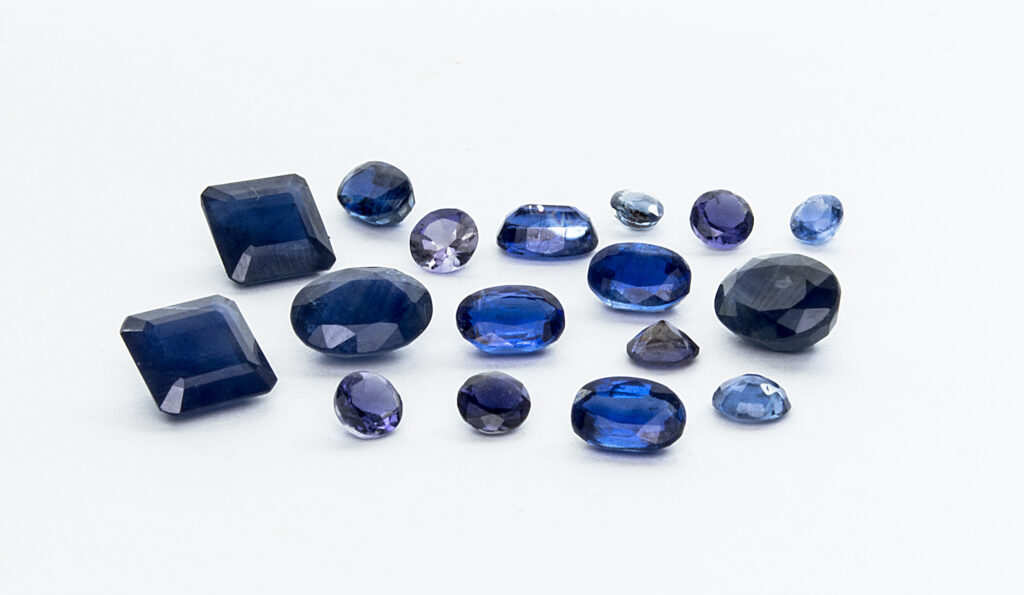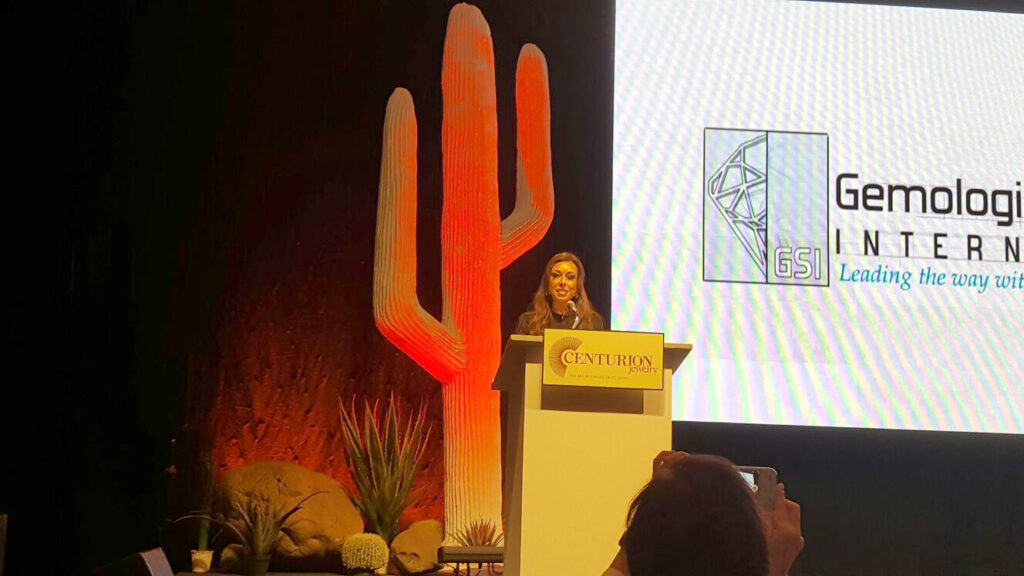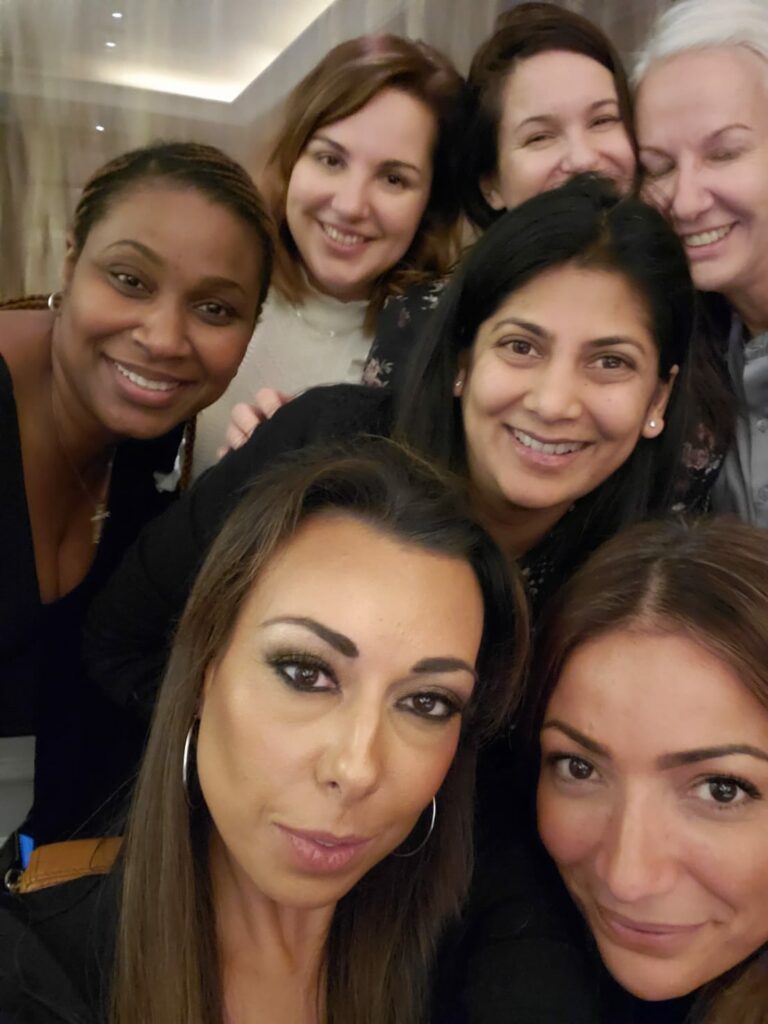
Sapphires are colored stones composed of the mineral Corundum, (Al2O3). In its pure form, corundum is colorless, but may have different colors depending on what transition metals are present in the crystal structure.
Hues of the stone range from very pale blue to deep indigo, and some sapphires even exhibit a phenomenon of color change, often going from blue in daylight to purple under incandescent light.
The name sapphire is derived from the Greek word “sappheiros,” and Sanskrit “sanypryam,” meaning “blue stone.” In Vedic literature, blue sapphire is considered the gemstone of Saturn.
A symbol of power and strength, the sapphire is the birthstone for the month of September.
Varieties
Pure corundum is colorless in nature. Mineral impurities which become included in the crystalline structure of the mineral turn the corundum into beautiful different hues. Some popular colored varieties of sapphires include the padparascha sapphire, the golden sapphire, and the amethystine or plum sapphire. These are just a few of the many varieties of this mineral.

Formation
Blue sapphires are found in environments that are rich in aluminum. These include caves with pegmatites, alluvial, and eluvial deposits near hydrothermal volcanic flows.
Localities
Blue sapphire is found in Australia, Kenya, Madagascar, Myanmar (Burma), Tanzania, Thailand, Sri Lanka (Ceylon), Afghanistan, Tajikistan, Vietnam, and India.
Properties

Corundum in the form of sapphire is the second hardest gemstone after the diamond. It has a hardness of 9.0 on the Mohs scale and is resistant to scratches. Sapphire also has excellent toughness and is a great choice for daily wear in jewelry.
Common Treatments and Enhancements
Sapphires are commonly heat-treated to enhance their natural color and clarity. Sapphires may also be treated with a coloring agent at really high temperatures in a process called lattice diffusion, which affects the color of the stone.
However, another treatment process such as fracture filling may alter the stones appearance by hiding certain features. Colored oil or resin will be used to infill existing fractures on the stone.
Quality Factors
Like other gemstones, the value of a sapphire can be determined by three important factors: richness of color, clarity, and quality of cut. The more vibrant the color (deep cornflower blue, or other colors) and the less inclusions present, the more valuable the stone becomes.

Sapphire Lookalikes or Simulants
Any lookalike of a sapphire is considered a simulant. Simulants may be created or formed from naturally occurring minerals such as glass, synthetic spinel, kyanite, tourmaline, zircon, and paste.
Care and Caution
Though relatively high in hardness and toughness, it is important to be mindful while wearing and caring for sapphires. Avoid polishing or recutting coated or lattice-diffused stones, as color might be removed during the process. Direct heat, ultrasonics, steam cleaners, and acids should always be avoided if the sapphire is heavily fractured in any fashion. The use of ultrasonics and steam cleaners can be used on untreated stones or heat treated stones, but to be on the safe side, it is best to stick to gently using a damp cloth.
Summary
Since ancient times, sapphires have been considered one of the earth’s finest and rarest gemstones. Their continued global demand is a testament to their desirability and durability. With proper care and knowledge, sapphires can last for generations and carry on their value. For these reasons, Gemological Science International is proud to offer services to ensure consumers that their sapphires are properly classified and any treatments are identified to the highest level of precision.
About The Author
Debbie Azar is the Co-Founder and President of Gemological Science International (GSI), one of the largest gemological organizations in the world, and a distinguished leader in the global diamond and jewelry industry. As an executive with extensive knowledge of the jewelry and gem lab industries, her entrepreneurial skills and vision have helped GSI achieve rapid and continuous growth worldwide, establishing 13 leading-edge gemological facilities on four continents. She currently serves on the boards of the Jewelers Vigilance Committee, Responsible Jewellery Council, and Jewelers for Children, and is a member of the 24 Karat Club of New York. She has been featured in Forbes, Daily Mail, Good Morning America, Bloomberg, Bloomberg Businessweek, Fox Business, Fox5, CBS2, BOLDTV, Varney&Co, The Street, and NASDAQ, among others.











































